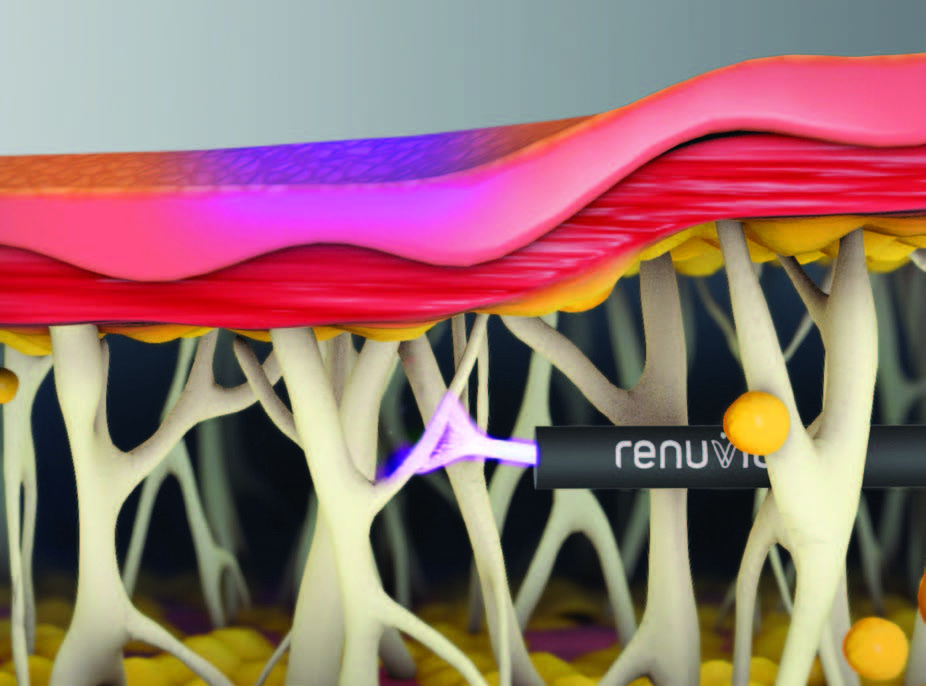Radiofrequency (RF) Energy In Aesthetic Surgery

Tighten and improve the appearance of the skin.
Radiofrequency (RF) energy has been used in the medical field for several decades and, more recently, in cosmetic surgery to tighten and improve the appearance of the skin. RF energy heats the deep layers of the skin, causing collagen fibers to contract and stimulating the production of new collagen. The result is firmer, tighter, younger-looking skin.
Several types of RF energy devices are used in cosmetic surgery, including monopolar RF devices, bipolar RF devices and multipolar RF devices. Monopolar RF devices use a single electrode to deliver energy, while bipolar RF devices use two electrodes placed on either side of the area to be treated. Multipolar RF devices use several electrodes, which allows power to be distributed more evenly and reduces the risk of side effects.
RF energy devices are generally used to treat sagging skin on the face, neck and body and are often used in conjunction with other procedures, such as liposuction or facelift. The procedure is usually performed under local anaesthetic, with the patient awake and alert throughout. The RF energy device is applied to the skin, and energy is delivered in the form of a series of pulses that heat the deeper layers of the skin and stimulate the production of new collagen.
There are several advantages to using RF energy devices for skin tightening in cosmetic surgery. One of the main advantages is that the procedure is minimally invasive, requiring no incisions or stitches. This means there is less scarring, and recovery time is shorter than for more invasive procedures, such as facelifts. RF energy devices are also relatively painless, with most patients experiencing minimal discomfort during the procedure.
Another advantage of RF energy devices is that they can produce long-lasting results. The treatment stimulates the production of new collagen, helping to improve skin elasticity and firmness over time. The results of RF energy treatment are generally progressive and may take several weeks or months to become fully visible.
Several types of radiofrequency (RF) energy devices are on the market for skin tightening in cosmetic surgery. Each works differently and has its own features and benefits. Here’s a comparison of the primary RF devices available on the market and the brands associated with each:
Monopolar RF devices: Monopolar RF devices use a single electrode to deliver energy, which is conducted through the skin to a return electrode placed on the opposite side of the body. Monopolar RF devices are generally used to treat higher body areas, such as the abdomen or thighs. Monopolar RF devices include Renuvion, Thermi RF, Sculptra Aesthetic and Accent Prime.
Bipolar RF devices: Bipolar RF devices use two electrodes placed on either side of the area to be treated. Energy is conducted between the electrodes, heating the tissue in between. Bipolar RF devices are generally used to treat smaller body areas, such as the face or neck. Bipolar RF devices include Bodytite, Vivace RF, Silhouette Soft and Thermage FLX.
Multipolar RF devices: Multipolar RF devices use multiple electrodes to distribute energy more evenly and reduce the risk of side effects. Multipolar RF devices are generally used to treat various body areas, including the face, neck and body. The Venus Viva, Exilis Elite and Accent XL are examples of multipolar RF devices.
One of the main differences between these RF energy devices is how they deliver energy to the skin. Monopolar and bipolar RF devices use a single electrode or pair of electrodes, while multipolar RF devices use several electrodes. This can affect how the energy is distributed and the effectiveness of the treatment.
Several RF energy devices are on the market, each with its own characteristics and advantages. Monopolar RF devices are generally used to treat higher areas of the body, while bipolar and multipolar RF devices are used to treat smaller areas. The size and shape of the electrodes and any additional features can also vary from one device to another, affecting the precision and effectiveness of the treatment.
In aesthetic surgery, RF energy devices are generally considered safe and effective for skin tightening. However, as with any medical procedure, there are some potential risks and side effects to be aware of. Some common side effects of RF energy treatment include redness, swelling, and tenderness in the treatment area, which typically resolve within a few days. Rarely, more severe side effects, such as scarring or skin discolouration, may occur. Patients must discuss any potential risks and side effects with their surgeon before the procedure.
In conclusion, RF energy devices are a safe and effective option for skin tightening in aesthetic surgery. The procedure is minimally invasive, relatively painless, and can produce long-lasting results. RF energy devices are often used to treat sagging or loose skin on the face, neck, and body, and they can be used in conjunction with other procedures, such as liposuction or facelift surgery. While some potential risks and side effects exist, RF energy devices are generally considered safe and effective for skin tightening in aesthetic surgery.
For more information on combining radio-frequency energy with your aesthetic surgery, please schedule a consultation with Dr. Jonathan Kanevsky at his Beverly Hills plastic surgery clinic. To book, call 424-222-9352.
- “Radiofrequency Skin Tightening.” American Society of Plastic Surgeons, www.plasticsurgery.org/cosmetic-procedures/skin-tightening/radiofrequency.
- “Radiofrequency Skin Tightening: Benefits, Risks, and Results.” American Board of Cosmetic Surgery, www.americanboardcosmeticsurgery.org/procedure-learning-center/face/skin-tightening/radiofrequency/.
- “Radiofrequency Skin Tightening: What You Should Know.” American Society for Aesthetic Plastic Surgery, www.surgery.org/consumers/procedures/skin-tightening/radiofrequency.
- “Radiofrequency Skin Tightening.” Mayo Clinic, www.mayoclinic.org/tests-procedures/radiofrequency-skin-tightening/about/pac-20393835.

